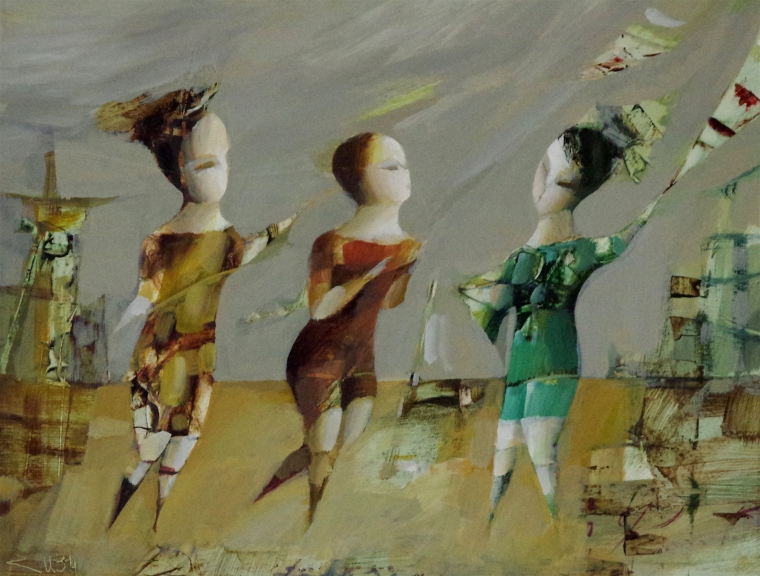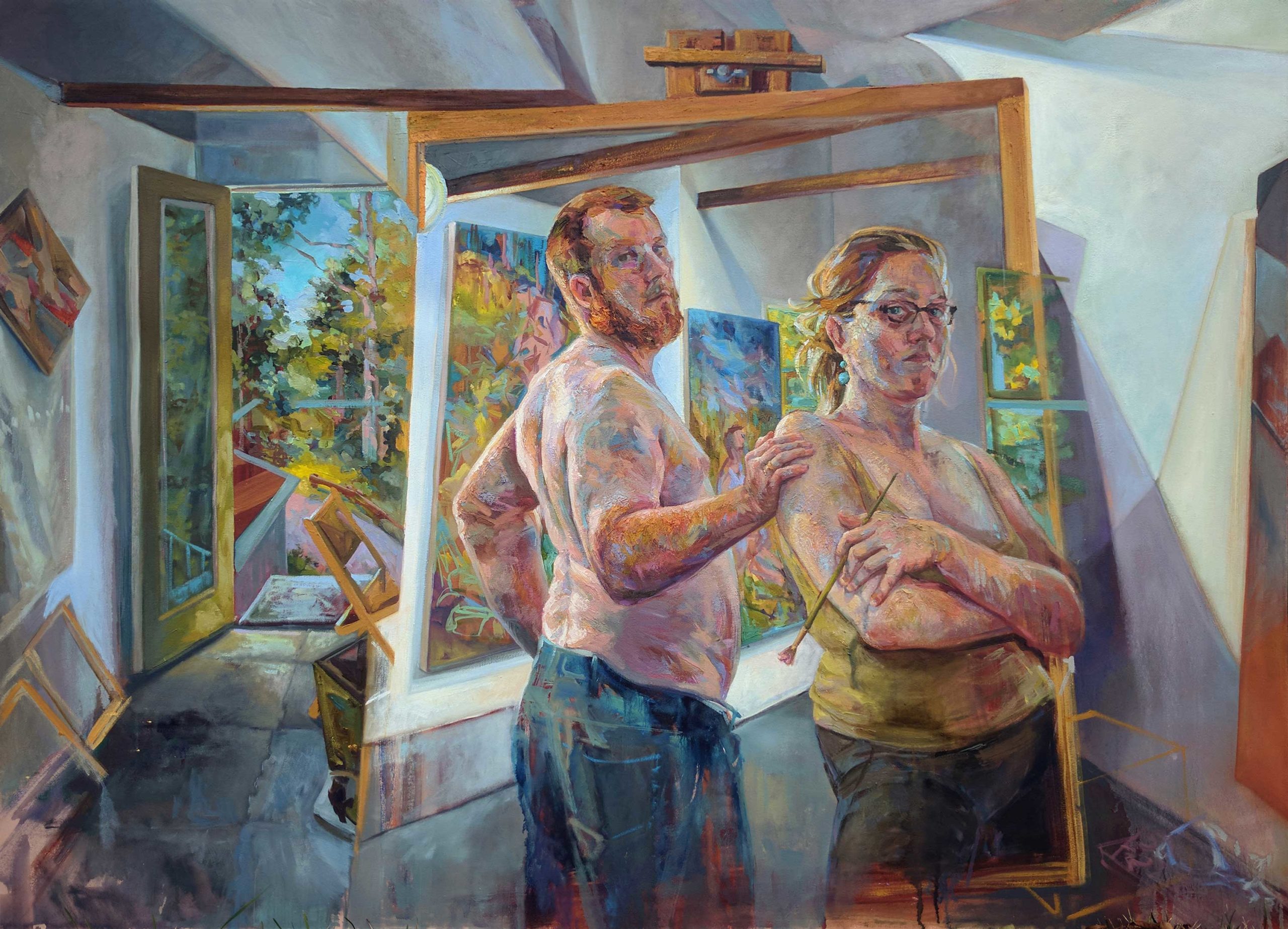Exploring Iconic Artists and Their Influences on Figurative Oil Painting
Exploring Iconic Artists and Their Influences on Figurative Oil Painting
Blog Article
The Development of Figurative Oil Paint: Recognizing Its Historic Importance and Modern Interpretations
The evolution of figurative oil paint offers as an engaging lens through which to examine the interaction in between artistic expression and historic context. From the careful naturalism of the Renaissance to the emotive power of the Baroque, each period has added layers of significance and technique to this classic tool. Contemporary artists, attracting from this rich heritage, are currently reinterpreting the human figure in manner ins which test conventional stories. As we check out these transformations, one have to think about how the discussion between existing and past informs not just artistic method but likewise societal representations in an increasingly complicated world.
Origins of Metaphorical Oil Paint
The beginnings of metaphorical oil paint can be mapped back to the early Renaissance in Europe, especially in the 15th century. The advancement of oil paint permitted for better deepness of color and detail, enhancing the realism and vibrancy of their job.

In this transformative era, figures were frequently depicted within contextually abundant settings, showcasing not just their physical qualities yet likewise their mental states. Pioneers such as Jan van Eyck and Titian harnessed the tool's convenience, utilizing layering methods to achieve luminance and appearance. This development helped with the representation of complex materials and the subtleties of complexion, adding to the growth of portrait and narrative scenes.
Moreover, the Renaissance emphasis on humanism cultivated a recognition for individuality, which in turn affected artists to develop more relatable and vibrant numbers - figurative oil painting. As a result, metaphorical oil painting became a powerful vehicle for narration and emotional interaction, laying the groundwork for future imaginative movements and designs
Key Historic Movements
Considerable historic motions have actually shaped the advancement of figurative oil paint, each adding unique approaches and techniques that broadened the tool's possibilities. The Renaissance marked a zero hour, stressing realism and the human type, with musicians like Leonardo da Vinci and Michelangelo pressing the boundaries of physiological precision and perspective. Following this, the Baroque age brought significant contrasts of light and shadow, exemplified by Caravaggio, that instilled religious styles with extreme emotionality.
The 19th century introduced Romanticism and Realism, where musicians such as Delacroix and Courbet tested timeless ideals, concentrating on specific expression and everyday life. The introduction of Impressionism additionally revolutionized the medium by highlighting the impacts of light and shade, leading to a departure from conventional depiction.
In the very early 20th century, activities like Expressionism and Cubism redefined metaphorical painting through abstraction and the exploration of emotional depth. Each of these motions not just showed the social adjustments of their times however additionally laid the foundation for modern interpretations. The interplay between these historic activities has created a rich tapestry of ideologies and styles, affecting contemporary musicians in their pursuit of capturing the human experience on canvas.
Methods and Materials Development

Throughout the Baroque period, methods such as chiaroscuro and sfumato emerged, boosting the emotional vibration of figurative make-ups. Artists started to try out lusters and impasto, original site controling appearance and brightness. By the 19th century, innovations like using pre-mixed paints in tubes revolutionized access, allowing musicians to paint en plein air and catch the fleeting impacts of light.
The 20th century observed the introduction of artificial pigments and mediums, which increased the palette and modified the uniformity of oil paints. Furthermore, the expedition of new application strategies, such as palette knives and brushes of differing stiffness, additional varied artistic expression. Collectively, these innovations mirror the advancing connection in between materials, methods, and the imaginative vision inherent in figurative oil paint.

Contemporary Interpretations
Contemporary interpretations of figurative oil painting reflect a dynamic dialogue in between tradition and innovation, where artists challenge developed standards and discover varied motifs. This advancement manifests in various ways, as modern musicians mix timeless methods with contemporary ideas, commonly attending to social, political, and individual narratives.
Numerous specialists draw inspiration from historic jobs, yet they instill their pieces with contemporary viewpoints, making use of the human view publisher site type as an automobile for commentary on gender, identification, and society. Artists progressively experiment with abstraction, distortion, and multimedias, which permits a broader interpretation of the figure and its context.
Furthermore, the use of dazzling color palettes and non-traditional compositions frequently serves to interfere with traditional watching experiences, provoking crucial involvement from target markets. This shift in emphasis extends past aesthetic appeals; it reflects an expanding awareness of the intricacies of human experience in an interconnected world.
As metaphorical oil paint continues to evolve, it stays a vital medium for discovering the nuances of modern life, embodying both a regard for heritage and a commitment to modern idea. The result is an abundant tapestry of expression that reverberates with the complexities of the modern-day human condition.
Effect On Modern Art
The impact of metaphorical oil paint on modern-day art is profound, as it has continuously motivated a myriad of artistic movements and methods throughout the 21st and 20th centuries. From Expressionism to Surrealism and past, the expedition of the human number has remained a central style, enabling musicians to share intricate feelings and narratives. This emphasis on figurative representation has resulted in a re-examination of conventional methods, leading to ingenious techniques that mix realistic look with abstraction.
In addition, modern musicians have actually welcomed metaphorical oil paint as a way to resolve political and social concerns, making use of the tool to test understandings of identity, culture, and gender. The revival of interest in figurative job in current years shows a hoping for connection in an increasingly digital globe, where human experience and feeling are critical.
Furthermore, the dialogue in between metaphorical oil painting and modern art is apparent in the jobs of musicians such as Kehinde Wiley and Jenny Saville, who draw on historical referrals while instilling their pieces with modern significance. Eventually, figurative oil paint continues to shape and redefine modern-day creative expression, underscoring its long-lasting relevance in the art world.
Verdict
The development of metaphorical oil painting highlights its historic significance and versatility throughout various creative activities. Ultimately, metaphorical oil paint remains an important tool for exploring the human experience, resonating exceptionally in today's electronic landscape.
The evolution of figurative oil paint offers as an engaging lens through which to take a look at the interaction between artistic expression and historical context.Considerable historic movements have shaped the advancement of metaphorical oil painting, each contributing distinct ideologies and techniques that expanded the medium's possibilities.As historic activities formed the trajectory of metaphorical oil paint, the materials and methods utilized by musicians have actually likewise undertaken substantial makeovers. figurative oil painting.The influence of metaphorical oil paint on modern-day art is extensive, as it has actually consistently motivated additional resources a myriad of imaginative activities and techniques throughout the 20th and 21st centuries.The advancement of figurative oil painting emphasizes its historical value and versatility throughout different creative motions
Report this page